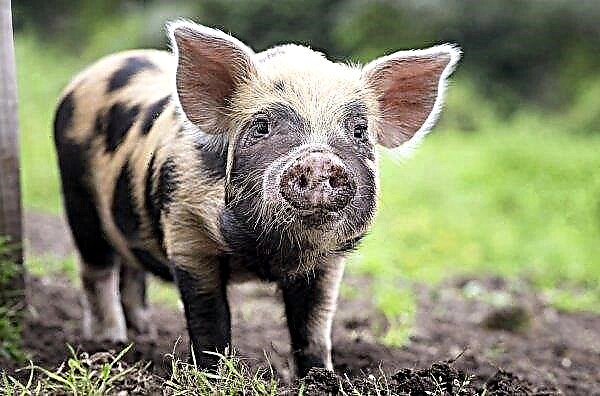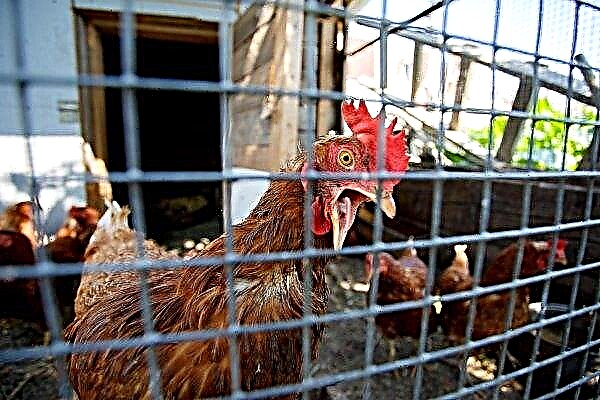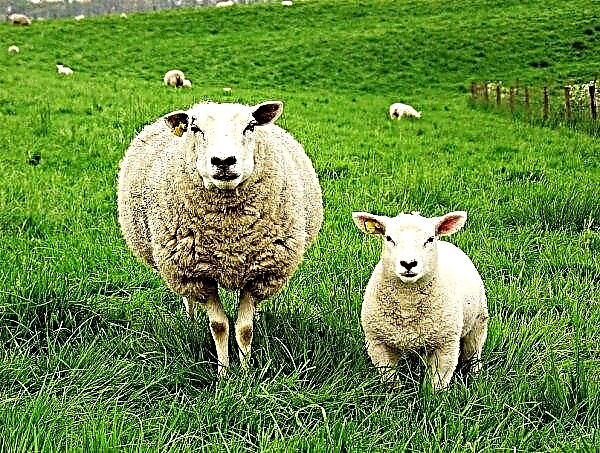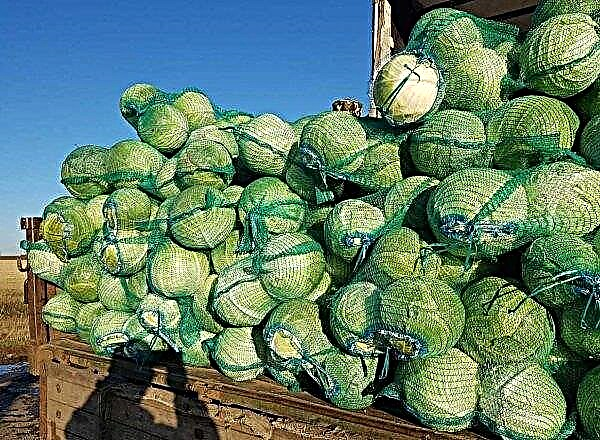“I want to breed bees, but I don’t know where to start,” - such thoughts often prevail among novice beekeepers who try to acquire at least a few beehives and queen bees to get homemade honey. For attempts to equip an apiary at home to succeed, you need to know the basic secrets of successful beekeepers and be able to correctly apply them in practice.
How to prepare for beekeeping
Before embarking on an active action for breeding bees, it is worthwhile to study in detail the basics of beekeeping, the features of arranging a hive, read about bee families, uterus, their livelihoods, so as not to destroy the acquired families and to collect the maximum amount of beekeeping products in the first year. It is recommended to obtain the necessary knowledge in the winter, so that in the spring immediately begin to take action, without wasting time.
When studying materials about beekeeping, give preference to literature marked “for beginners” or “beekeeping from scratch,” where all the intricacies and techniques of organizing an apiary are described in simple understandable words.
The main areas for study should be:
- features of insect behavior and their interaction, hierarchy in the family;
- subtleties of insect behavior depending on the season;
- reproduction and developmental stages of insects;
- organization of nests in the hives;
- wintering of insects;
- possible diseases and pests, the fight against them;
- subtleties of the collection and processing of bee products.
It is worth remembering that breeding bees is a complex and time-consuming process, so you should decide in advance whether you are ready to spend every day of your free time servicing the apiary. The future beekeeper should be ready to devote enough time to care for the hives, only in this case the activity will bring a positive result.
Important! Bee stings provoke in some people a severe allergic reaction of the body, which can result in death. Even the most reliable protective suits and the precautions taken do not guarantee complete safety, therefore the absence of allergies in the future beekeeper is a prerequisite for breeding insects.
An important factor in the organization of an apiary is sufficient financial resources, since a novice beekeeper will have to bear the costs of:
- acquisition or construction of hives;
- acquisition of bee families;
- the acquisition of the necessary equipment for the care of the hives, the collection of bee products, their processing;
- arrangement of a hive wintering place (in case of improper weather conditions in winter - to protect bee colonies from death);
- purchase of food (insects do not always have time to prepare enough honey for wintering, so they are additionally fed).

How to choose a place for an apiary
When choosing the most suitable place for placing hives, you should pay attention to:
- The proximity of the apiary to the source of water, which the bees need to cool the hives and develop offspring. If such a source is located far from the apiary, the productivity of the bees will be significantly lower. Natural springs, ponds or artificially created ones - water barrels, cattle drinkers, on the surface of which branches or planks float (so that insects can sit on them and draw water) can be suitable sources.
- Good illumination of the chosen place in the morning for an earlier awakening of insects in order to stimulate them to the beginning of the "working day" earlier than usual.
- The abundance of food for bees throughout the entire period of activity of insects, therefore, flowering plants in the territory should always be (from early spring to late autumn), so that the insect productivity is at a high level and they do not have to eat previously collected stocks. The required flowering plants need to be grown independently or placed in flowering meadows, near gardens, which is easiest to implement in the suburbs in the country or to residents of the countryside.
- The presence of active movement of air currents at the location of the hives, since in the process of life insects emit a large amount of water vapor, which should leave their homes in a timely manner. To keep the hives well ventilated, avoid lowlands, ravines and ditches to accommodate them.

What beehives to choose for bees
There are several types of bee dwellings:
- Dadanov hive - the most common, it is made of spruce wood, has a simple design and has good capacity. It can immediately accommodate 12 frames, and in the process of growing a family of insects, understaff the house with additional frames;
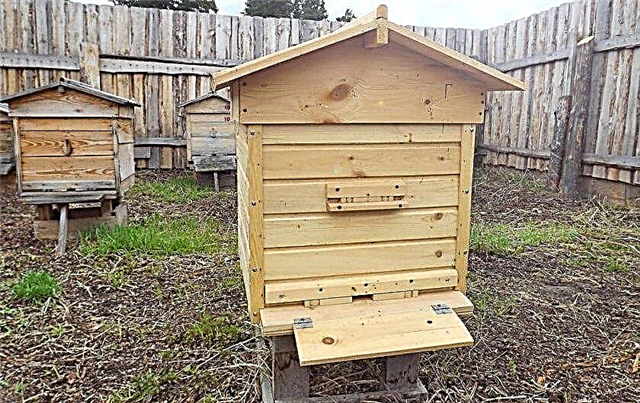
- alpine hive - presented in the form of a multi-hull house, which in its structure is as close as possible to the natural habitat of insects. The design of the hive is very compact, has no partitions and ventilation holes;
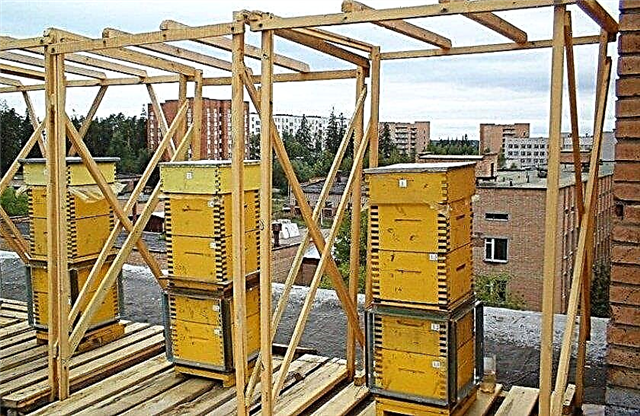
- Rue's design - has 6 buildings, each of which can accommodate up to 10 frames, each of the buildings is added as the family of bees is added. Such a design can only be used in warm climates, so that the constant movement of the hulls does not provoke a supercooling of the hives;
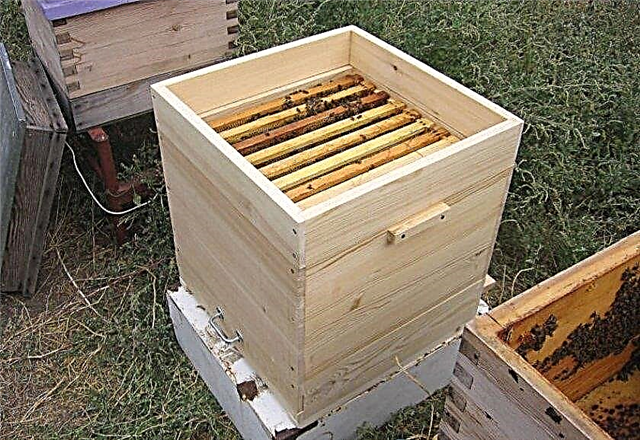
- cassette hive - It is increasingly used by beekeepers when breeding bees, as it is able to maintain a special microclimate created by bees inside the home, which minimizes the risks of disease damage. For the manufacture of the construction, only spruce or pine boards are used, which is waxed and dried with a building hair dryer to ensure moisture resistance and strength of the product;

- Ukrainian sunbed - A simple horizontal hive design that is suitable for beginner beekeepers. It is distinguished by the simplicity of maintenance and construction, allowing you to gradually learn the basics and learn the key skills of beekeeping. Such a hive holds up to 20 frames and has insulated side walls, so it provides a comfortable winter for insects.
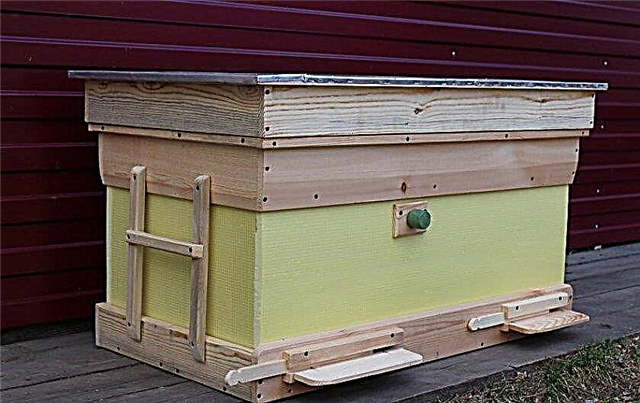
When choosing hives, novice beekeepers should pay attention to ease of maintenance, spaciousness, good ventilation, and the presence of insulation for wintering on the street. Dadanovsky, Alpine hives and Ukrainian sunbed correspond to such characteristics, therefore it is better to give preference to one of them, based on personal preferences.
Video: how to become a beekeeper
How to choose and purchase bees
The best time to buy bees is spring - the beginning of summer, when the bee family contains representatives of all ages. In addition, the spring purchase, followed by settling in the hive, allows insects to equip new honeycombs, stock up on food for the winter and work to get marketable honey.
When choosing bees, pay attention to the breed; it is necessary to give preference to copies adapted to a specific region. It is better for beginner beekeepers to ask for help in zonal or regional beekeeping stations, which can give good advice and help with the choice. The acquisition of insects in such places significantly reduces the risk of producing unproductive, old or sick bee colonies.
Did you know? To get 1 liter of honey, bees need to fly around 8 million flowers, collecting nectar from them.
Before buying, be sure to inspect the selected family, paying special attention to the uterus. A sign of the presence of the uterus is the presence in the family of representatives of different ages, while the inherent queen cells are not observed. Be sure to assess the quality of the uterus, for this consider brood on the combs.
If the honeycomb is densely, practically without bald spots, seeded with eggs - we can assume that the uterus is of high quality. If the brood of different ages is located nearby, this may indicate a poor uterus or damage to the brood by the disease. The presence of a drone brood may indicate infertility of the uterus or the presence of tinder, such a family is not recommended.
Also pay attention to the state of the family. High-quality families in the spring should incubate at least 8 frames, while up to 4 frames are occupied for brood. In the summer, a high-quality family settles up to 15 frames, in the autumn - up to 10.

What equipment is needed for a beginner beekeeper
For the high-quality performance of work on caring for the hives, collecting and processing bee products, appropriate equipment is needed that not only simplifies and speeds up the process, but also protects from insect bites.
Apiary protection
In order for the work carried out in the apiary to be effective and safe, it is necessary to take care of protective clothing that will cover all parts of the body and prevent insect bites.
There are several basic rules for choosing and using protective clothing:
- It is necessary to choose protective suits of light color, it is better than white, on them insects react more calmly.
- The suit should protect all parts of the body; the edges should be fixed with an elastic band that would prevent the bees from entering.
- Give preference to beekeeping masks, which are distinguished by good visibility, having a dense mesh and a small frame that would prevent the mesh from adhering to the face in windy weather (in this case, the bees can easily sting through it).
- Choose gloves made of synthetic material; in leather gloves, the sting remains and can penetrate the skin even in the process of changing clothes.
Did you know? Bees do not distinguish between shades of red, in contrast to blue and yellow, they are also able to see ultraviolet rays.
There are many options for self-made costume and mask. For a mask, it is better to choose a tulle or a fine mesh of dark color, since light material greatly affects the visibility.
What you need for proper care of bees
Caring for bees and the hive is easier if you stock up with the necessary tools, among which are:
- beekeeping chisel - the tool necessary for spreading the honeycombs, scraping the wax coating and propolis from the framework, cleaning the walls and bottom of the hive;

- smoker - made in the form of an iron cylinder having a lid-cone and bellows for smoke. This device allows you to scare away the bees and safely do the necessary work;

- mesh uterine cell - a container the size of a matchbox with two exits: one on the iron shutter, the second represented by a wooden block with an opening into which the feed is placed;
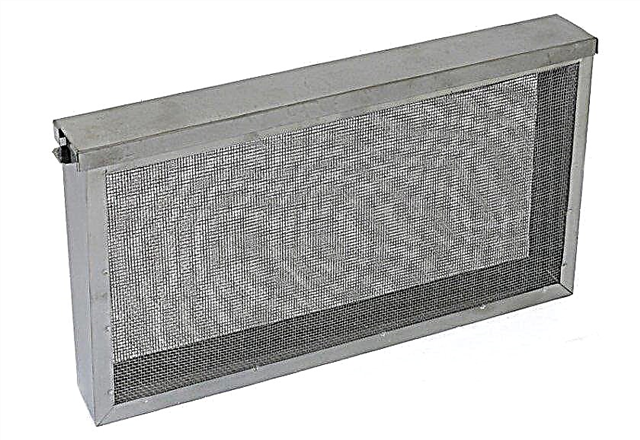
- box for carrying frames - Holds up to 6 frames, has good ventilation, tightly closes with a lid, is necessary to move the bees before landing in the hive;

- insect sweeping brush - must be soft so as not to injure the bees. It is necessary in order to remove insects from the honey frames that are extracted for processing beekeeping products. For each hive, it is better to purchase or make a separate brush so as not to transfer possible diseases between bee families;
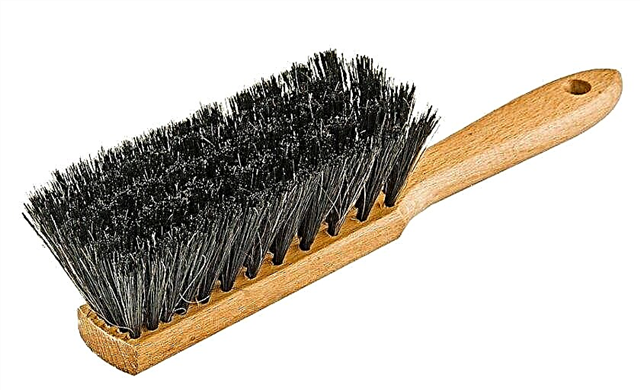
- device to shoot swarms - represented by two frames, which are connected by a light long pole. To attract the swarm to the frames, they are rubbed with melissa and placed in the hive, wait until the whole swarm passes to the frames, and transfer it to the beekeeping box;

- bee remover - it is necessary to remove insects from honey stores before pumping honey out of them. The most effective are mechanical removers.
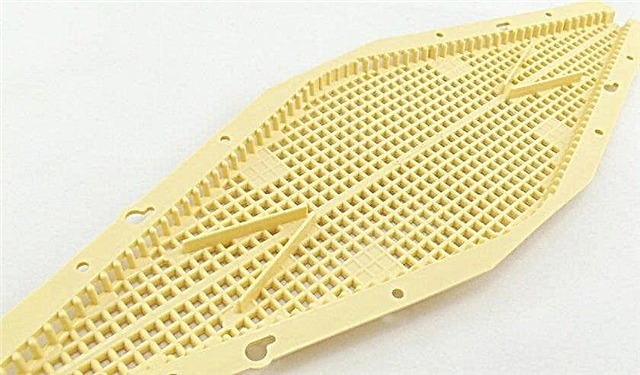
A set of tools for working with beekeeping products
To work with beekeeping products, you also need to acquire some tools:
- the beekeeper’s big knife - the device, sharpened on both sides, has a pointed end for easier opening of honey cells. It is advisable to acquire two such knives, since each is heated before starting work to simplify the procedure, and when one is completely cooled, use a well-warmed second.
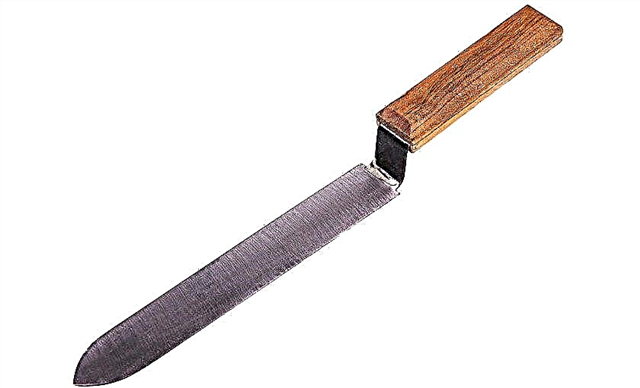
- honey extractor - necessary to extract honey from honeycombs. There are many types of honey separators, but the most popular are 2–4 frame (mechanical) or 20–50 frame (electrical);

- sieve - ordinary kitchen, which is necessary for filtering the pumped out honey;
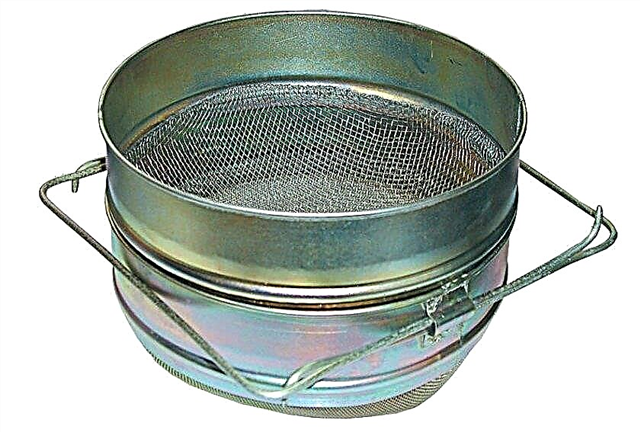
- table for printing honeycombs, which usually has additional boxes where it is convenient to keep all the inventory.
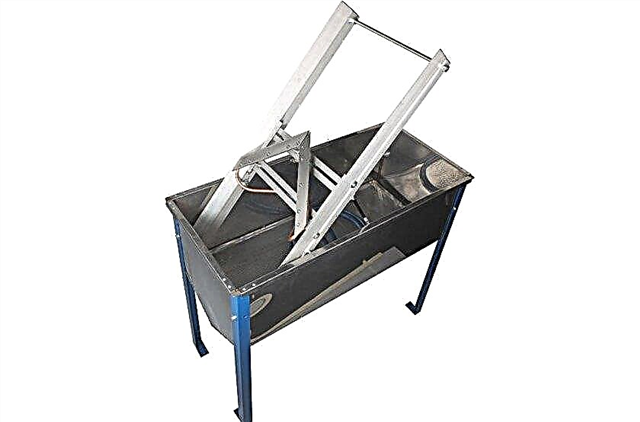
Bee breeding methods
There are two main methods of breeding bees:
- Purebred - is the main one for obtaining breeds of domestic bees, while mating queen bees and drones of the same breed to quickly obtain purebred offspring while preserving breeding qualities. Free mating is also possible, which ensures maximum survival and productivity of the bee family.
- Crossbreeding - it is used to obtain new breeds; for breeding, uterus and drones of different breeds are used. Such crosses often do not give a positive result, the survival rate of a new breed is minimal, the productivity of bees is very low compared to pure-bred families.
Did you know? For a day, one bee family can collect up to 10 kg of honey. In one bee family, there are up to 50 thousand bees, while only 60% of the individuals are responsible for collecting honey.
Seasonal Bee Care
Work in the apiary is conducted year-round, so a novice beekeeper needs to know all the intricacies of caring for bees in a certain period.
The beginning of spring work after the acquisition of the bee family should be carried out in May-April. At this time, all the beekeeper’s efforts are sent to the exhibition of bees, revision of bee families (if they hibernated in your apiary), creation of favorable conditions for high productivity and increase the number of families (nests are cleaned, hives are insulated, bees are provided with food in sufficient quantities, honeycombs are rebuilt, layering is reinforced, additional housings are installed to increase the family).
In the summer, in June-July, they complete the plan for the growth of the bee family to achieve high levels of honey collection. Work is also underway on the construction and warming of beehives for wintering bees, and fodder frames are prepared for the winter. At the same time, it is recommended to change the queens in families, if there is such a need. In the process of installing an additional case, they remove the honey frame for pumping honey, remove the shops when the bribe process stops.
In the autumn, from August to October, work is underway to prepare the apiary for the winter period. For this, a post-batch audit is carried out to determine the condition of the families at the end of the period of honey collection, reduce and warm the nests, actively feed the bee family to stimulate large laying of eggs by the uterus. In addition, they collect nests for the winter, prepare the winter hut, process the wax raw materials, move the bees to the winter huts.
Important! If it is bad to prepare an apiary for winter, large losses in the bee family cannot be avoided; even if part of the family remains, their productivity during the season will be very low.
From October to March, winter apiary care is carried out, which is based on observation of bees.If the hives are located in the room, they maintain the necessary conditions for a normal wintering, monitor the temperature regime to prevent freezing of insects, maintain dryness in the room, regulate the humidity level (not more than 50%), and fight mice who like to settle in warm hives.
Thus, it is possible for anyone who has good health, stable financial resources, and most importantly, a great desire to breed bees. To make it easier for a beginner to cope with the work of arranging an apiary, acquiring bees and caring for them at different times of the year, it is recommended to pay attention to the information presented in the subject literature.





















